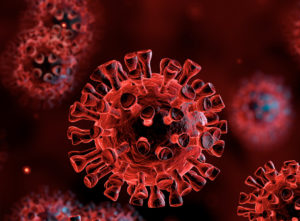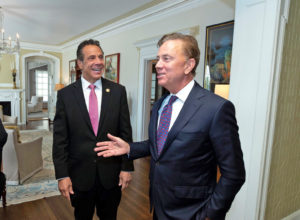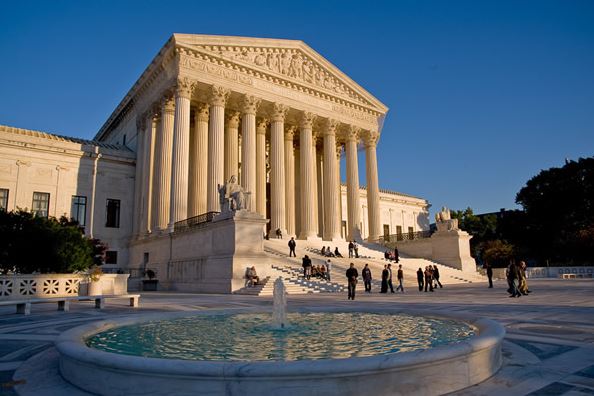Coronavirus cases are on the rise in both New York and Connecticut.
 According to New York state”™s Covid tracking information, so far there have been a total of 39,001 positive cases in Westchester County out of a total base of 736,097 tests for the virus.
According to New York state”™s Covid tracking information, so far there have been a total of 39,001 positive cases in Westchester County out of a total base of 736,097 tests for the virus.
Westchester County Executive George Latimer said that as of Oct. 12 there were 868 active cases in the county, a jump of 200 cases in one week and 300 net cases in two weeks.
Connecticut, whose infection rate has been in the 1% to 1.5% range for the past few months, stood at 2.4% on Oct. 13 ”” the state”™s highest rate since June, according to Gov. Ned Lamont. “When you see the positivity rate going from less than 1% to 1, 1.5, now 2.4, it”™s not unexpected ”” but it”™s incredibly unnerving and a little exhausting,” Lamont said.
As of Oct. 16, Connecticut had conducted more than 1.9 million tests and netted about 62,200 positive results. Fairfield County had recorded over 20,300 positive cases and 1,113 deaths; there were 48 people hospitalized.
Even so, Connecticut”™s Chief Operating Officer Josh Geballe said, only 2% of the state”™s hospital beds are being used by Covid patients at the moment. Connecticut began Phase 3 of its reopening on Oct. 8. Five days later, Lamont signed an executive order that permits, under certain conditions, the ability of municipal chief executives in towns and cities the option of reverting to the previously issued Phase 2 rules if infections spike.
The governor repeated that restrictions could also be reintroduced statewide if Connecticut”™s weekly infection rates approach 5%. Nevertheless, Lamont tried putting a positive spin on the current situation, noting that a single-day infection rate of 0.7% was recorded the previous week. “Keep a little perspective,” he said, calling the 2.4% number one that “you focus on, but you don”™t dwell on.”
Herd Immunity Theory
While state officials nationwide are expressing concerns about recent increases in the number of Covid-19 cases, The New York Times, Washington Post and Newsweek have confirmed that the White House has embraced a policy that would encourage spreading the infection throughout the U.S. population in order to create a so-called “herd immunity.”
The idea, rejected by numerous infectious disease specialists, has been promoted by President Donald Trump”™s science adviser Dr. Scott Atlas, among others. He is a radiologist who was at Stanford University and was a frequent guest on Fox News before joining the administration.
The theory of herd immunity is that if enough people are infected and become immune, a virus will disappear because it will no longer have enough victims to infect. Trump has referred to the idea as “herd mentality.” It is not known, however, whether people who have become infected with Covid-19 develop longterm immunity to future infections. Cases of people who have recovered from the virus being reinfected have been reported.
A letter known as the Great Barrington Declaration appearing on a libertarian website promotes the idea of making herd immunity official government policy and was reported to have been reviewed at the White House.
Proponents of herd immunity say as little as 20% of the population would have to be infected, while others suggest the number may be 40% and could go as high as 80%. That would result in the U.S recording anywhere from about 65 million cases to about 260 million cases that could result in about 650,000 to 1.3 million deaths at current death rates.
“Our Covid numbers, candidly, are moving in a different direction,” Latimer said about numbers that have ticked up during an Oct. 13 briefing. He recalled that the county had the Covid-19 outbreak well controlled in June, July, August and most of September.
“Our numbers were very good. We had major reductions,” Latimer said. “At one point we had 1,200 people hospitalized and we got that number down to small double-digits. We had active cases as high as 12,000 and we brought it down into the 400 range.
“What we”™re seeing is something of concern, but it is not a crisis,” Latimer said.
“The Sunday (Oct. 11) into Monday (Oct. 12) testing had 107 new cases of coronavirus. That”™s the largest single-day number that we”™ve had since May,” Latimer reported. “Right after Memorial Day, we had that kind of peak input number.”
He noted that every day in April at least 300 cases of the virus were being discovered in the county.
Latimer expressed concern that the number of people hospitalized in Westchester with Covid just jumped in a week from 27 to 43. He said that, while it”™s much less than the more than 800 people at a time who were hospitalized with the virus late in the spring, the increase needs to be watched.
He noted that the Westchester death toll stands at 1,462. Five people died the week of Oct. 5, Latimer said, compared with one in the previous week and two in the week before that.
“If that number continues and we start to lose multiple people on a given day … then we are looking at something very serious,” Latimer said. “We think that people are dropping their guard a little bit. We think that folks don”™t see the virus as having advanced here for a while.”
He expressed concern that people are becoming lax about the threat from the virus and are not being as diligent as they should about wearing masks and social distancing.
Cuomo Weighs In
Latimer”™s review of the Westchester situation came on the heels of Gov. Andrew M. Cuomo expressing renewed concern about persistent hotspots showing up in parts of the state, especially Brooklyn, Queens, Rockland and Orange. On Oct. 13, there were 545 new cases in New York City, 69 in Rockland and 61 in Orange. There were 11 deaths in the state from Covid, bringing the total to 25,598.

“Our strategy is to continue to identify these clusters if and when they pop up, get even more refined in our targeting and attack them as needed,” Cuomo said on Oct. 13. “As we go into the fall, and the numbers nationwide are going up, we must work to keep our numbers down ”” and that”™s going to take every New Yorker wearing their masks, socially distancing and being New York tough to maintain our progress.”
The day before, Cuomo slammed other states that have been claiming to have lower numbers of Covid cases but actually were artificially reducing the tally by cutting back the number of tests being performed, in line with Trump”™s contention that less testing would mean fewer cases to report.
“The president has been promoting the politics of denial on Covid and he”™s done that on day one,” Cuomo said. “He”™s doing the politics of denial even after he had Covid. It”™s not a problem ”” you get Covid, you get in a helicopter, you go to Walter Reed, Walter Reed sends a team of doctors and they give you experimental drugs that nobody else can get and then you”™re fine.
“Yeah, that”™s denial,” the governor said. “And it”™s a disgusting denial when you see the number of lives lost.”
Cuomo pointed out that, on a weekly basis, Florida has dropped from 428,000 tests to 153,000; Texas from 520,000 tests to 349,000 tests; Georgia from 210,000 to 132,000; and Arizona from 94,000 to 70,000.
“Why would you do that? Because it”™s the politics of denial being implemented in the public health system, which is based on science fiction,” Cuomo said. “Science fiction is if you don”™t test, you won”™t find the positive cases and therefore, they don”™t exist. That is science fiction, but that is what you see happening in some states in this country.”
Cuomo said that as of Oct. 13 the hotspot areas have a positive testing rate for the virus averaging 4.13%, while the state as a whole without the hotspots has a 1.2% positive test rate.
Ohio, Michigan and Virginia have been added to New York”™s and Connecticut”™s Covid-19 travel advisory lists, bringing the total to 36 states plus the territories of Guam and Puerto Rico. Visitors from those locations are supposed to self-quarantine for 14 days after arrival.





















